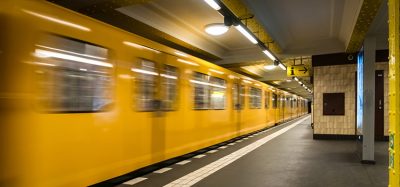Creating new value in shaping the future of railway service
- Like
- Digg
- Del
- Tumblr
- VKontakte
- Buffer
- Love This
- Odnoklassniki
- Meneame
- Blogger
- Amazon
- Yahoo Mail
- Gmail
- AOL
- Newsvine
- HackerNews
- Evernote
- MySpace
- Mail.ru
- Viadeo
- Line
- Comments
- Yummly
- SMS
- Viber
- Telegram
- Subscribe
- Skype
- Facebook Messenger
- Kakao
- LiveJournal
- Yammer
- Edgar
- Fintel
- Mix
- Instapaper
- Copy Link
Posted: 28 September 2022 | Huawei | No comments yet
The digitalisation of railway services plays a significant role in maintaining the sustainable development of the industry, and technology companies like Huawei have been developing a series of solutions to shape the future of railway service.


The digitalisation of rail services has had a slow start in emerging markets, but it is the way to maintain the comparative advantage and sustainable development of railway services in the future evolution of the industry, especially in the post-pandemic era. Economic uncertainties have given further momentum to the digitalisation of railway transport and have encouraged the development and implementation of innovative solutions.
“Deeper digital transformation will help companies to better adapt to an ever-changing world. As a tech company working closely with partners to find the right technology for the right scenario, we always support our customers in furthering their digital transformation and unleashing the power of digital,” said Ryan Ding, Huawei’s Deputy Chairman of the Supervisory Board, at Huawei Connect 2022 in Bangkok in September 2022.
For railway companies to get better prepared for the future of the industry, the following three actions can be a good start:
- Reshape connectivity with the latest technologies, such as a Future Railway Mobile Communication System (FRMCS), Wi-Fi 6, and an all-optical network for a more digitalised rail infrastructure
- Reconstruct platform with a cloud-based digital environment, bringing numerous siloed IT systems to a single platform for data-sharing and interoperability
- Enable intelligence across the entire railway lifecycle with connectivity and platforms that enable upper-level solutions to address pain points.
InnoTrans 2022: Driving digitalisation in future rail
From 20-23 September 2022, Huawei showcased how cutting-edge technologies – such as 5G, cloud computing and Internet of Things (IoT) – deliver a range of truly innovative applications in the rail industry. Huawei also launched its latest digital rail solutions, including the Future Railway Mobile Communication System (FRMCS) Solution, and shared successful practices of working with railway companies on a global scale.


Credit: Huawei
Speaking at InnoTrans 2022, Xiang Xi, Vice President of Aviation & Rail BU at Huawei, noted that digital transformation is a long journey, and that rail operators need to “dream big”. “Currently, the most pressing challenge for rail operators is to identify both the pain points and benefits and address them with cost-effective digital solutions—to ‘act small’.” Xi said.
In Parallel with InnoTrans 2022, Huawei held its 9th Global Rail Summit, bringing together industry leaders, ecosystem partners and technical experts to discuss the future of the rail industry.
Huawei’s global footprint
Transnet digitalised freight services in South Africa with Huawei’s all-optical backbone network for railways
Transnet, a leading South African rail company, was developing a digital strategy to reposition its freight transportation system and improve its competitiveness. The strategy required the use of innovative ICTs to improve the connectivity, capacity and bandwidth of South Africa’s rail, port and pipeline networks.


Credit: Huawei
With Huawei’s All-Optical Backbone Network Solution for Railways, Transnet built an independent large-capacity wavelength division multiplexing (WDM) transmission network that meets its business and security requirements.
The company also adopted Huawei’s dense WDM (DWDM) technology, which supports a single wavelength capacity of at least 100 Gbit/s. With it, Transnet has upgraded its 100G network and provides customers nationwide with larger capacity, faster speed and more redundant bandwidth connections.
Harbin Metro deployed Huawei’s AirFlash 5G mmWave technology for better train-to-ground communication
Huawei has also worked with Harbin Metro to build a next-generation AirFlash 5G mmWave intelligent communications network to support novel applications such as cloud platforms and big data for its Lines 2 and 3. AirFlash 5G mmWave is used in train-to-ground communication to enable automatic alignment, connection, identity authentication and upload of data. The transmission speed is much higher than the previous mode, and the data transmission will not be interfered, adding to security and reliability.


Credit: Huawei
These success practices in the industry reveal a trend of digitalisation in the rail industry: big-data-enabled smart applications, cloud-based industrial platforms and next-gen flexible connections. “So, we proposed to the rail industry that the process of digitalisation should be to reshape the connections, reconstruct platform and enable intelligence, eventually realising MaaS in the transportation field,” said Steven Xiong, CTO of Aviation & Rail BU at Huawei.
References
- https://www.unescap.org/resources/covid-19-and-its-impact-railway-sector-asia-and-pacific
- https://e.huawei.com/en/special_topic/Industry/transportation/innotrans/2022
- https://www.huawei.com/en/news/2019/9/huawei-airflash-5g-microwave-enterprise-solution
Related topics
5G & Transport Communications, IoT (Internet of Things), Supply Chain Logistics, Transport Logistics
Related modes
Rail
Related cities
Harbin
Related countries
China, South Africa
Related organisations
Harbin Metro, Huawei, Transnet
Related people
Ryan Ding, Steven Xiong, Xiang Xi





